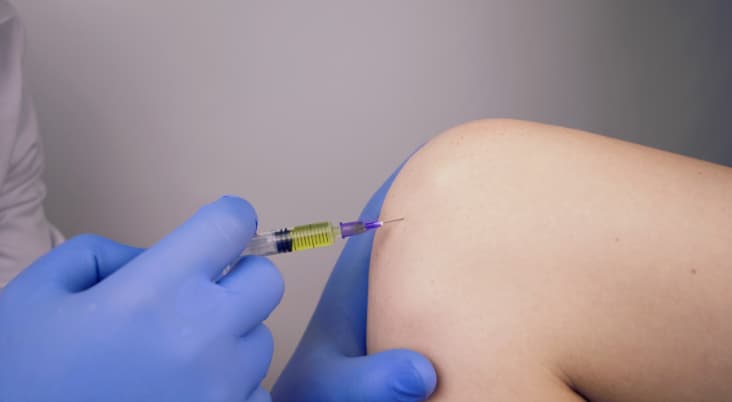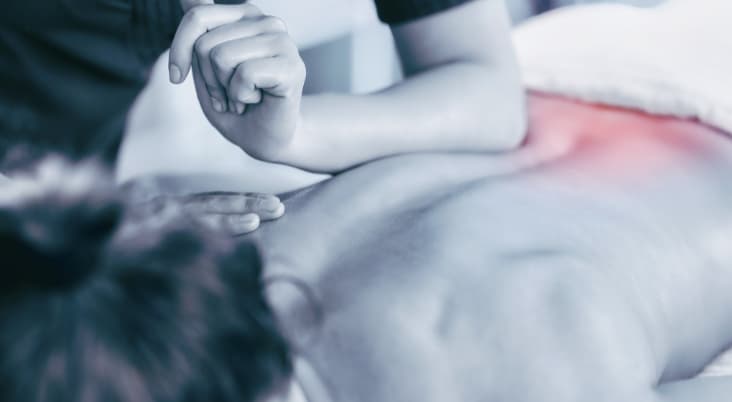Undoubtedly, babies bring a different level of happiness to our lives. It feels marvellous meeting all the needs of your baby, especially good health. However, this period also comes with challenges. Similar to adults, babies too experience different levels of pain and discomfort. Toddlers can tell us when they are feeling pain, discomfort, and hungry, among other sensations. On the other hand, babies cannot talk, therefore making it difficult for us to provide a particularly required relief. More so, it is difficult to recognize a specific type of pain in babies.
Most times, when a baby cries uncontrollably despite all the efforts to provide comfort or relieve pain, the last option is consulting a professional healthcare provider. Some of the common signs of pain in a baby include wrinkled facial expressions, disrupted sleep and wake patterns, vigorous body movements, muscle tension, and crying that cannot be comforted.
Cranial Osteopathy
Cranial osteopathy is a complementary type of medicine that aims at balancing the biorhythms of the body. According to evidence-based medical sources, the human body consists of three major rhythms that are important to the body’s involuntary processes. They include physical, emotional, and intellectual biorhythms. The main purpose of cranial osteopathy is to ensure that these three rhythms are at par, thus ensuring that a person is healthy in terms of emotional, physical, and intellectual well-being. Statistics show that cranial osteopathy is one of the common non-conventional forms of medicine that improve the quality of life for seniors and other vulnerable groups. For instance, CST is a standard treatment method for people who have mental complications. It is also one of the most effective non-medicinal treatments applied in relieving pain and discomfort in babies and children.
How Does it Work?
Cranial osteopathy involves gently massaging the head and the spine to release stresses all over the body. Osteopaths state that manipulating the brain is an all-cure mechanism as it aids in improving your cranial rhythm to improve various health issues. Basically, cranial osteopathy is somewhat a naturopathic form of medicine as it enhances the health of the body, mind, and spirit. The psychological explanation behind CST is that the brain controls all the activities in the body, both voluntary and involuntary. The central nervous system consists of the spinal cord and the brain. This is why the treatment involves gently massaging the head and the spinal cord. The central nervous system is complex because it controls our decisions, reactions, and emotions. It decides whether we feel pain, happiness, sadness, pleasure and react to these emotions. Therefore, this means that the state of the brain and the spinal cord is a significant determinant of our general health.
Osteopaths suggest that CST is an advanced form of meditation because it involves direct touch from a healthcare professional. It takes a lot of practice and professionalism to become an osteopath. An osteopath can feel the gentle contractions and expansions in a child’s body, which puts the professional at the upper hand concerning manipulating the body to improve involuntary mechanisms.
Why Babies Need Cranial Osteopathy
A baby may be unsettled due to several reasons. A good example is indigestion and blocked airways. However, the most common reason babies need cranial osteopathic treatments is to release the tension in their head and neck muscles. The process of birth may not be as simple as it appears. As a baby find its way down the vaginal opening, its head undergoes a series of contractions so that it can squeeze through the birth canal. This is a significant cause of head trauma in babies and can cause future complications if untreated. Most babies have odd-shaped heads due to the forces exerted on them as they pass through the mothers’ pelvic bones. This is, however, not a reason to worry as a baby’s head gets better shape gradually after birth. Nevertheless, the moulding process can at times be incomplete, even with attempts to change the position of the baby’s head. When this happens, an osteopath may be your best solution to improving your baby’s head shape and general well-being.
What Will an Osteopath do for a Baby?
The first step towards cranial osteopathy is recognising the shape of the head. After that, the osteopath checks if the head and neck align as required. The professional will then begin to gently massage the baby’s muscles around the head and spinal cord. The neck and upper back are also important as they have some parts of the head muscles. Babies respond faster to CST because they have soft muscles, tissues, and bones: during cranial osteopathy, these parts of the body’s movements enhance the treatment process. It is also easier to feel the tension in babies’ muscles and joints compared to adults. Typically, a session of cranial osteopathy takes approximately 30 minutes. You should notice an improvement in your baby after the first session. Complete treatment will require two or three sessions. Nonetheless, physicians may request you for more sessions if your baby has more complicated conditions.
Benefits of Cranial Osteopathy for Babies
1. Improved Sleep
Sleep is important for babies, especially during their first year. This is because adequate sleep enhances growth and development. According to reliable research, babies double their weight by the time they are six months. This is a result of a sleep-related hormone known as somatotropin which is active while babies are asleep. Cranial osteopathy aims at improving one’s mental, physical, intellectual, and emotional well-being. All of the factors mentioned play a significant role concerning sleep. For instance, sleep and mental health are closely related. Individuals with mental complications are more likely to have sleep disorders such as insomnia. Sleep deprivation is a disorder that most people experience several times during their lifetime. While most of us can bounce back from insomnia and other sleep-related disorders, the phenomenon is risky for babies because they are vulnerable hence likely to have more severe consequences. Keep in mind that babies who have a good night’s sleep are faster at learning and remembering new things. Physical pain in the body is also a factor that affects sleep. By massaging a baby’s body, the muscles, tissues, and joints relax. Muscle relaxation is one of the proven ways of improving sleep. Through CST, a baby attains balance in all the body muscles, thus having undisturbed and adequate sleep.
2. Boosts Baby’s Immunity
What more could you want than excellent immunity for your baby? Breastfeeding is the best way to support the immune system of an infant. However, the health of the immune system also largely depends on the movement of body fluids. That said, the tension in connective tissues, muscles, and joints should be minimum to allow blood and lymph to circulate throughout the body. For instance, the lymphatic fluid transports proteins, minerals, hormones, cells, and other body components involved in the various biological mechanisms. As an osteopath massages a baby’s muscles and joints, the lymphatic fluid finds passages to transport body components from one location to another. The movement of body fluids relies on muscular contractions. Therefore, there is a need for joints, tissues, and muscles to be in particular states for proper movement of the fluids. Remember that muscle contraction and relaxation aids in the pumping of blood around the body. Hence, important functions such as white blood cells’ ability to protect against diseases rely on the immune system. Not to forget, CST improves mental health, thereby preventing the excess production of stress hormones. The overproduction of stress-related hormones is a primary cause of organ failure due to hormonal imbalances.
3. Enhances Digestion
Reflux is a common problem in infants caused by tensions in the neck, diaphragm, and other parts of the body. It can be distressing as it interferes with the feeding process. Cranial osteopathy sees to that there is a calming balance in all the muscles in the body. Most times, problems concerning digestion in babies result from damage of nerves that are critical regarding proper digestion. For example, the vagus nerve is a crucial factor concerning digestion. This nerve can be damaged during birth due to pressure exerted on the baby. The consequence of the vagus nerve damage is the disruption of the required involuntary communication that aids in digestion. An osteopath sorts the issue by massaging the vagus nerve, thereby restoring the required communication. This leads to the relaxation of the diaphragm and the entire digestive system. As a baby twists, squeezes, and turns during birth, the gut can also be irritated causing discomfort, constipation, and nausea. CST is a gentle, non-medicinal procedure that fixes this problem within a few minutes. Following a pediatric study, cranial osteopathy improved gastrointestinal function for 72% of 400 pre-term babies.
Does Cranial Osteopathy have Side Effects?
A common effect of cranial osteopathic manipulative medicine is mild discomfort. This, however, fades within 24 to 36 hours. There is no evidence to prove that CST is dangerous for babies. However, it is unsafe for babies who have unfused skulls. Also, cranial osteopathy is not recommended for people who have a history of head trauma, deep-vein thrombosis, and bleeding disorders.
Should You Consider Cranial Osteopathy for Your Infant?
Evidence-based studies show that CST is a safe, non-conventional treatment for infants. It can relieve your baby of stress, discomfort, reflux, breathing problems, and indigestion, among other benefits. Nevertheless, you must consult a certified osteopath, as not all osteopaths practice their profession in the paediatrics department.
Related Articles
- Osteopathy For Babies And Children
- Introduction to Cranial Osteopathy
- Osteopathy During Pregnancy
- Healthy Postural Positions for Babies!
- Osteopathy FAQs




























